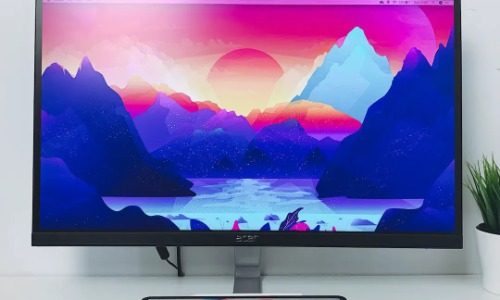Delve into the world of visual clarity with our guide on 1280×800 resolution, offering insights into aspect ratios and HD definitions. Equip yourself with knowledge for a sharper, more immersive viewing experience.
1280×800 Resolution & Aspect Ratio, Explained
Introduction
Understanding the intricacies of display technology is essential in a world dominated by visuals. This guide breaks down the specifics of 1280×800 resolution, shedding light on aspect ratios, HD clarity, and how these factors contribute to the overall viewing experience.
1280×800 Resolution: Unveiling Visual Clarity
1280×800 resolution stands as a benchmark for visual clarity in the digital realm. With 1280 pixels horizontally and 800 pixels vertically, this resolution strikes a balance between crisp details and screen real estate. Whether you’re using it for presentations, entertainment, or work, 1280×800 ensures a sharp and vibrant display.
Aspect Ratio: Bridging Width and Height
Defining Aspect Ratio: Aspect ratio is the relationship between the width and height of an image or screen. In the case of 1280×800, the aspect ratio is typically 16:10. This ratio is widely favored for its versatility, providing ample width for various applications.
HD Resolution and Aspect Ratio: Decoding the Terms
HD Resolution: HD, or high definition, is a term associated with increased clarity and detail in visual content. 1280×800 is considered an HD resolution, offering a superior viewing experience compared to lower resolutions. The increased pixel count contributes to sharper images and text.
Aspect Ratio Differences: While HD content often follows a 16:9 aspect ratio, 1280×800 maintains a 16:10 aspect ratio. The slight difference impacts the width of the display, providing a unique visual balance that suits certain applications, especially in professional settings.
Question One: Difference Between Aspect Ratio and Resolution
Aspect ratio and resolution are distinct yet interconnected concepts. Resolution, such as 1280×800, refers to the number of pixels displayed on a screen. Aspect ratio, on the other hand, defines the relationship between the width and height of those pixels. In essence, resolution quantifies clarity, while aspect ratio shapes the screen’s dimensions.
Question Two: HD Resolution and Aspect Ratio Explained
HD resolution signifies a higher pixel count, enhancing visual clarity. In the context of 1280×800, this resolution, combined with a 16:10 aspect ratio, delivers a balanced and detailed viewing experience. The aspect ratio contributes to the overall layout and wideness of the display, influencing how images and content are presented.
Conclusion
As we navigate the digital landscape, understanding resolution and aspect ratio nuances becomes increasingly vital. With 1280×800, you unlock a visual realm where clarity meets balanced dimensions. Whether you’re a professional seeking optimal workspace or an enthusiast craving immersive visuals, the knowledge of 1280×800 resolution empowers you to make informed choices for displays that captivate and inspire.

